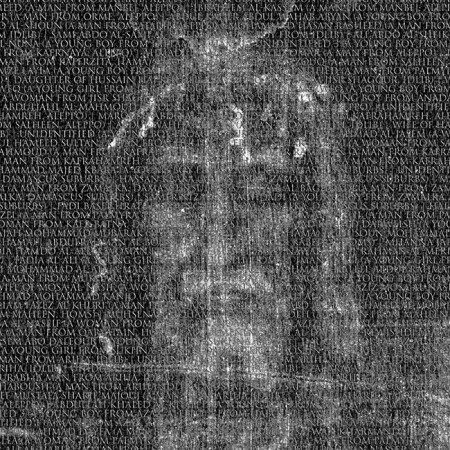Art installation links Christ with Syrian refugees

The digital artwork Lamentation for the Forsaken, by Michael Takeo Magruder, was on display during Lent at the Church of the Epiphany in D.C.
By Melissa Lauber
UMConnection Staff
At Wesley Theological Seminary, they know that when significant art comes together with deep theology, God shows up.
From now through May 19, the seminary is inviting the public to encounter the sacred when they host Michael Takeo Magruder’s “Lamentation for the Forsaken,” a real-time new media installation juxtaposing Christ’s journey to the cross with the plight of refugees fleeing the Syrian Civil War. The hours for viewing the piece are Monday through Friday from 12:00 – 1:00 p.m. Additional hours can be heard by calling (202) 885-8600.
The installation, which will be laid out on the tomb of Bishop Bromley Oxnam in the chapel of the seminary in Washington, D.C., is the ninth station of the cross, part of an art exhibit that has been on display throughout the city of Washington during Lent.
The piece features two distinct visual elements. The first, the artist explained, is an image of Christ on a photographic negative of the Shroud of Turin that has been aesthetically transformed with the name and details of people who have died in the Syrian conflict.
The second is an underlying video stream that portrays the lives and hardships of Syrian refugees.
“The combination of these two layers generates an endlessly shifting digital tapestry that oscillates between the iconic image of Christ and the tragic stories of those affected by war,” reads an official statement about the installation. “The real miracle isn’t the Shroud itself, it’s our capacity to look into the eyes of the forsaken and see our Saviour.”
For Kiki McGrath, the curator of the Dadian Art Gallery at Wesley, Lamentation for the Forsaken “brings the Christ story into our world right now,” she said. “It’s an ancient story set in a modern context. It provides a space for contemplation and reflection that allows you to think about both of these narratives differently. That’s a gift we’ve been given by this artist.”
Wesley Seminary is one of the few seminaries in the nation that actively combines art and theology. Students are required to take an
For McGrath, the arts are a way of allowing students to more deeply understand the nature of God the Creator, and to look with curiosity and wonder at the world around us.
Growing up Roman Catholic, she said she always felt the presence of God and of Mary. Religious pictures and the Stations of the Cross gave her a landscape in which to place her feelings about her faith.
Stations of the Cross, she explained, are a series of images depicting the passion of Christ. The faithful

Takeo’s art juxtaposes the image from the Shroud of Turin with names of the Syrian dead.
During Lent, the 14 stations were spread as a Way of Sorrows throughout Washington, D.C. This pilgrimage for art lovers was designed to provoke spiritual and political passions, said its organizers, the London-based CoExist House.
The first station, “Jesus is condemned to death by the mob,” for example, was on display at the United Methodist Building. Created by Ndume Olatushani, the installation “Disrupting the Cradle to Prison Pipeline,” used human-shaped orange jumpsuits to draw attention to injustices of the criminal justice system.
At the Church of the Epiphany in D.C., the ninth station in which “Jesus Falls for the Third Time,” the Lamentation for the Forsaken was featured.
Takeo is known as one of the most influential digital artists working today. Located in London, his projects in new media have been showcased in more than 350 exhibitions in 34 countries.
Through his work being displayed at Wesley, McGrath said, we become witnesses in Christ’s story and the story of the Syrian refugees becomes our own. “We bring our own experiences to it.”
The video panels are aligned with the body of Christ. At the feet are images of the refugee’s journey, at Christ’s hands are images of people helping one another, the Body of Christ holds images of the bodies of the dead and the face shows the face of Christ blended with actual faces of men, women
The recent use of chemical weapons in Syria and the U.S. bombing in
Photos: Michael Takeo Magruder, Lamentation for the Forsaken, 2016. Installation in the Church of the Epiphany, Washington, D.C. Image copyright and courtesy of the artist.

